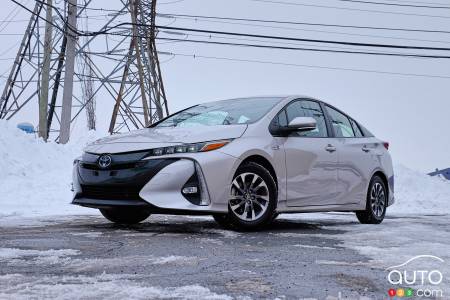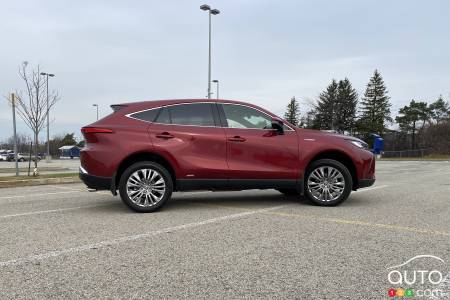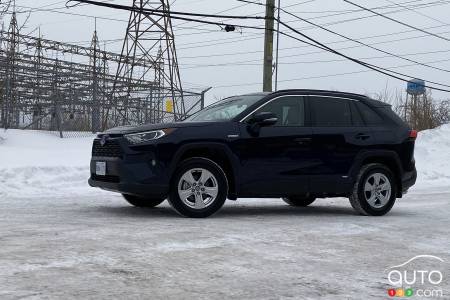Last week we took a look at Toyota’s new breed of hybrid models equipped with all-wheel drive, specifically to see if they performed at the level of the straight-gas-engine models produced by the Japanese automaker. This week, we stick under the microscope the hybrid vehicles’ true fuel consumption performance.
See also: The New AWD Toyota Hybrid Models: A Worthwhile Combo?
Hybrid systems are becoming a habitual presence within the Toyota lineup. Time was, you had the choice of a Prius to take advantage of an electrically-enhanced powertrain, or nothing. Today it's almost faster to name the Toyota models that don't offer it.
What’s more, the models currently on offer benefit from the first real evolution of Toyota's hybrid approach, one that finally delivers some interesting results. This is more the case with some models than others, but still, the progress is notable overall.
However, what about the fuel consumption figures announced by the manufacturer? How do they compare to what owners get in real-world driving? While we can generally trust those official numbers, it’s also true that in some cases they don’t quite reflect what you get when out on the road, day after day.
Having driven several Toyota hybrids over the past few months, I decided to do a little (very basic) math, namely by comparing what the manufacturer claims with what I observed. Some data will certainly surprise you, for better or for worse.
Here is a small compilation of the ratings recorded with the following vehicles: Corolla Hybrid, Prius Prime, Highlander Hybrid, Sienna and Venza (the latter two are only available in hybrid configuration, by the way).
Corolla (1.8L 4-cylinder + electric motor)
The current generation of the Corolla (sedan) was presented to us in 2019 as a 2020 model. I had participated in the Canadian launch that took place near Calgary. With the hybrid version, which we mainly drove on the highway and some country roads, the average recorded was 4.6L/100 km.
That's roughly what the company promises, with 4.4L/100 km in the city and 4.6L/100 km on the highway.
I had another occasion to drive a Corolla hybrid at the end of February of this year. I was expecting a lower rating due to the colder weather, but that didn’t happen: my week concluded with a rating of 4.7L/100 km.
As for the driving experience, let's just say that it's not the most exciting of versions. It's actually quite boring to drive, but you don't choose it for its dynamic qualities. This is the case with almost all of Toyota's hybrid models.
See also: 2021 Toyota Corolla Hybrid Review: Here to Stay
Prius Prime (1.8L 4-cylinder + electric motor)

In the case of the Prius Prime, it's not so much the average fuel consumption that should be checked, but rather the electric range offered. Why? Because depending on how disciplined you are about recharging the battery pack, the type of route you take and the number of trips you make, the vehicle’s range can vary greatly.
During my week behind the wheel of the model, I maintained an average of 3.6L/ 100 km. I had 100 km to cover on each trip, so I was fated to dip into the gas tank to get where I was going. But a user who does 30 or 40 a day is going to end up with a rating under 1.0L/100 km.
As mentioned, I was more interested in the range, which Toyota advertises at 40 km. That’s not that impressive, frankly (the RAV4 Prime, in comparison, delivers 68 km), but we expect there to be an improvement when Toyota next revises the model. When we first drove that RAV4 Prime in California a couple of years ago, we had no trouble reaching 50 km (even getting to 53). In the city, some owners are getting 60 km.
Of course, with long highway trips and cold weather (my test of the Prius Prime took place in early February), you’re going to get less. Still, I managed to drive the Prime 30 km each time on electric power, with a best result of 34.
Again, it's not earth-shattering, but it's in line with what Toyota says, considering what’s lost when driving in wintertime (generally 20 to 25 percent of range).
See also: 2020 Toyota Prius Prime Review: What’s Old Is New Again
Sienna and Venza (2.5L 4-cylinder + electric motor)
.jpg?scaledown=450)
The Sienna minivan has been revamped this year and alongside it the Venza SUV has been revived. These two models come only with a hybrid powertrain and nothing else, along with all-wheel drive delivered by an electric unit on the rear axle.
The promised fuel consumption with the Sienna is 7.1L/100 km. I got a result of 7.3L/100 km, which proves that in this case Toyota's numbers are both correct and impressive.
See also: 2021 Toyota Sienna First Drive: The Minivan Hybrid Arms Race Is On

With the Venza, Toyota claims a possible 6.1L/100 km combined. Here, I was even more surprised, as I maintained an average of 5.8L/100 km after a 400 km trip, a good part of which was on the highway.
In the case of these two vehicles, Toyota can claim mission accomplished.
See also: 2021 Toyota Venza Review: Back and Better Than Before
RAV4 Hybrid and Prime (2.5L 4-cylinder + electric motor)

The RAV4 hybrid, which uses the same mechanical components as the Sienna and Venza, is, unsurprisingly, just as impressive both on paper and in real-world driving. The paper part is 6.0L/100 km; my reality was 5.8L/100 km. In the city, Toyota claims an average of 5.8L. I've been able to maintain an excellent rating of 5.2L/100 km when driving only in urban areas.
As for the Prime version, we've often had the opportunity to talk about it. With respect to the 68 km claimed by Toyota, it's possible to do more with urban driving, or even if you’re super gentle with the accelerating and braking. Truly, the manufacturer delivers the goods here.
See also: 2021 Toyota RAV4 Prime Review: What Do You Get the SUV That Has Everything?
Highlander: the exception that proves the rule
Considering all these other good results I’ve attainced dricing Toyota hybrids,, I expected the Highlander Hybrid to perform every efficiently. It also uses the 2.5L 4-cylinder engine, which further bolstered my confidence. But here anyways, my confidence as misplaced; Toyota’s hype is just not matched by reality.
Specifically, that hype talks of 6.7 L/100 km, with similar results for city and highway driving. I didn't manage to get under 8.0L/100 km. My week with the Highlander hybrid ended with a disappointing total of 8.3L/100 km.
I had the opportunity to ask the folks at Toyota about the disparity, and there was no attempt to evade the question; one person told me that they had logged the same kind of performance as me; another said that they had managed to do 7.6L/100 km under ideal conditions.
What I didn't get was an explanation of why there’s a gap between the promise and the reality, which is a shame. In any event, consumers are advised: the Highlander Hybrid does not deliver on its promise in terms of fuel economy.
See also: 2021 Toyota Highlander Hybrid Review: When 4 Doesn't Add up to 6
Conclusion
Overall, we can say that the fuel consumption ratings announced by Toyota with its hybrid vehicles are reflected in real-world driving. Unfortunately, there is an exception, and that is the Highlander hybrid. I'll keep hammering away at it to get answers as to why. The model’s official rating should reflect reality, and as it stands it does not.



